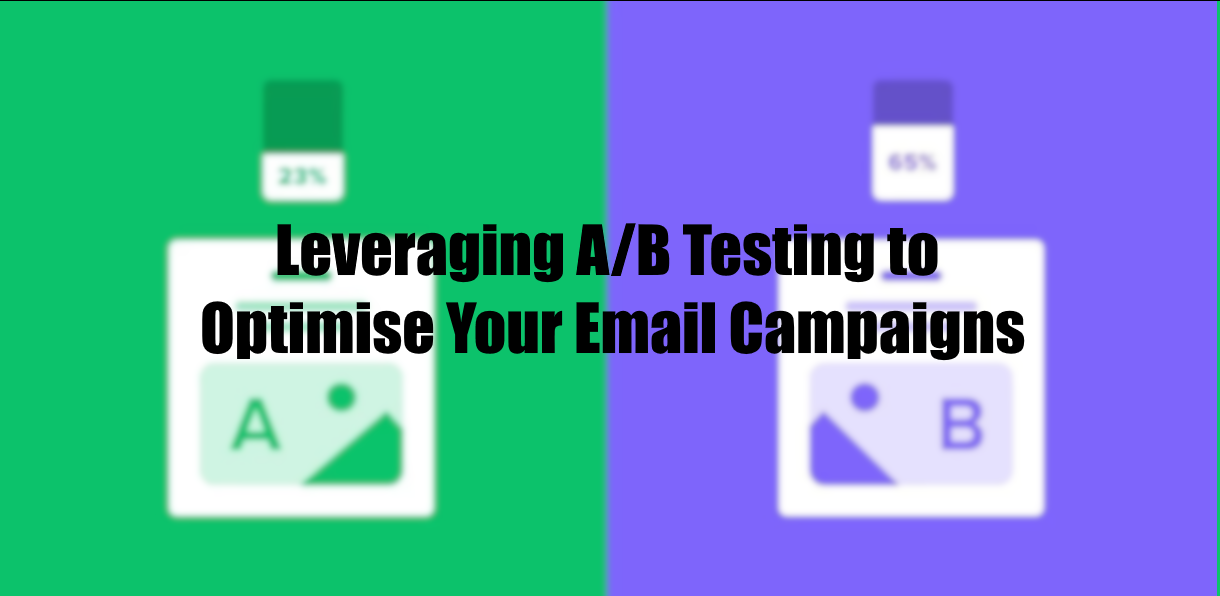Ever sent out an email campaign, crossed your fingers, and hoped for the best? Yeah, we’ve all been there. But here’s the thing—hope isn’t a strategy. If you want to maximize your email results, you need a solid game plan, and that’s where A/B testing comes in. It’s like having a crystal ball for your email marketing similar to using an email verification tool, showing you exactly what works (and what flops) so you can tweak and improve.

What is A/B Testing Anyway?
A/B testing (also called split testing) is basically a battle between two email versions to see which one wins. You send Version A to one half of your audience and Version B to the other half, then see which one gets more opens, clicks, and conversions. It’s a simple but powerful way to make sure you’re sending emails that actually get results.
Why Bother With A/B Testing?
Because guessing is expensive. Every email you send costs time and money, and if you’re not testing, you’re leaving money on the table. Here’s what A/B testing can do for you:
- Boost Open Rates – Test subject lines to see what grabs attention.
- Increase Click-Throughs – Find out which CTAs (call-to-actions) work best.
- Improve Conversions – Optimise content to get more sign-ups or sales.
- Reduce Unsubscribes – Figure out what keeps your audience engaged.
What Should You Test?
Not sure where to start? Here are some key elements worth testing:
1. Subject Lines
The subject line is your first impression, so make it count. Try testing: ✔ Short vs. long subject lines ✔ Personalisation (e.g., adding the recipient’s name) ✔ Emojis vs. no emojis ✔ Questions vs. statements
2. Email Content
Once they’ve opened the email, you want to keep them engaged. Test: ✔ Formal vs. casual tone ✔ Short vs. long emails ✔ Storytelling vs. straight-to-the-point messaging ✔ Different layouts (bullets vs. paragraphs)
3. Call-to-Action (CTA)
Your CTA is what drives action, so it needs to be spot on. Try: ✔ Button vs. text link ✔ “Shop Now” vs. “Get Your Discount” ✔ Placing the CTA at the top vs. bottom ✔ Different button colours
4. Send Time & Frequency
Timing can be everything. Test: ✔ Mornings vs. evenings ✔ Weekdays vs. weekends ✔ Sending once a week vs. twice a week ✔ Best time zones for engagement
How to Run a Proper A/B Test
Alright, now that you know what to test, here’s how to do it right:
Step 1: Pick One Variable to Test
Don’t go changing everything at once. Pick one element (like subject line) and keep everything else the same.
Step 2: Split Your Audience Randomly
Divide your audience randomly into two equal groups so the test is fair.
Step 3: Send and Analyse
Give your emails time to perform (at least 24-48 hours) and track:
- Open rates
- Click-through rates
- Conversion rates
Step 4: Pick the Winner & Apply the Learning
Once you have a winner, use that insight for future campaigns. Rinse and repeat!
Common A/B Testing Mistakes to Avoid
🚫 Testing too many things at once – Stick to one change per test.
🚫 Not testing long enough – Give it time to gather real data.
🚫 Ignoring small wins – Even a 1% increase in conversions can be huge.
🚫 Forgetting to optimise based on results – What’s the point of testing if you don’t use what you learn?
Final Thoughts: Start Testing Today!
A/B testing isn’t just for marketing nerds—it’s for anyone who wants better results from their emails. It takes the guesswork out of your campaigns and gives you real data to work with. So, stop hoping and start testing! Your audience (and your sales) will thank you for it.
Ready to level up your email game? Get out there and start testing—one email at a time. 🚀